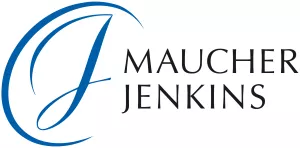- within Media, Telecoms, IT and Entertainment topic(s)
- with readers working within the Consumer Industries, Healthcare and Pharmaceuticals & BioTech industries
On November 18 2024, the EU design reform was published in the Official Journal of the European Union as a revised Regulation ( Regulation (EU) 2024/2822 (Regulation - EU - 2024/2822 - EN - EUR-Lex)) and a revised Directive (Directive (EU) 2024/2823 (Directive - EU - 2024/2823 - EN - EUR-Lex)).
The Regulation enters into force on the 20th day following publication and will apply four months later. The Directive formally enters into force 20 days after publication. EU member states have 36 months from that date to implement the directive in their national legislation.
The updated versions look to revamp the legislative acts so that they are brought up to date for modern day technologies, such as 3D printing and virtual reality. The term "Community Design" is brought up-to-date and is now "European Union Design". Some of the key elements of the new acts will be highlighted in this article.
Movement and Animation
The new Directive includes updates to some of the definitions. Article 2(3) of the Directive provides an updated definition to "design", as it now reads:
'design' means the appearance of the whole or a part of a product resulting from the features, in particular the lines, contours, colours, shape, texture and/or materials, of the product itself and/or of its decoration, including the movement, transition or any other sort of animation of those features;
The emphasised part of the new definition reflects practice already adopted, which is that the appearance of a design can include movement, transitions, or animation of features, so long as they add to the appearance of the design.
Here is an example from the Guidelines of an animated screen display registered in 2012:

Digital Objects and the Metaverse
Article 2(4) of the directive provides an updated definition for "product". It now reads:
'product' means any industrial or handicraft item other than a computer program, regardless of whether it is embodied in a physical object or materialises in a non-physical form
The updated definition states that a product includes both physical objects and non-physical objects (i.e. objects in the digital form).
3D printing
Article 16(2) of the directive provides the ability to tackle illegitimate 3D printing and the sharing of such design files. Specifically, Article 16(2)d sets this out as it states:
creating, downloading, copying and sharing or distributing to others any medium or software which records the design for the purpose of enabling a product referred to in point (a) to be made.
This gives more power to the holder of the design rights, as these actions will be subject to their approval.
Hidden Designs
Recital 13 Regulation and Recital 16 of the Directive no longer have any general requirement of visibility of a design. Thus, for example, the chocolate filling of a cookie, previously unregistrable (Decision T-494/12) would now be registrable, and the debate over whether a design is visible in normal use (see here) is only now relevant in the case of component parts of complex products. These must be visible in normal use if they are to be registrable, so the change does not quite open the doors to registration of spare or replacement parts or consumable parts (e.g. cartridges) of complex products.
Introduction of the Repair Clause
Article 19 of the Directive introduces a limitation to design protection for spare parts. It allows third-party manufacturers to produce "must-match" spare parts for complex products (such as vehicles), provided that these parts are used solely to restore the original appearance of the product.
The clause has a transitional period that lasts until 9th December 2032, as set out in Article 19(4). This provides protection for designs that have been registered before 8th December 2024.
This is deemed to be at the core of a sustainable economy, as it was highlighted in the Commission communication of 11 December 2019 on "The European Green Deal". This new clause looks to encourage repairability and reduce waste.
Unity of Class Requirement Removed
Article 27 of the amended Directive now allows for multiple designs to be included in one application. This change is perhaps the most impactful. It allows for bulk discounts that were previously available only where all the designs in an application belonged to the same class of the Locarno Classification. Now it is possible to bundle up many and varied designs in a single application and benefit from lower registration fees.
The content of this article is intended to provide a general guide to the subject matter. Specialist advice should be sought about your specific circumstances.


